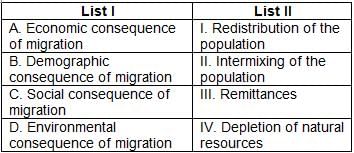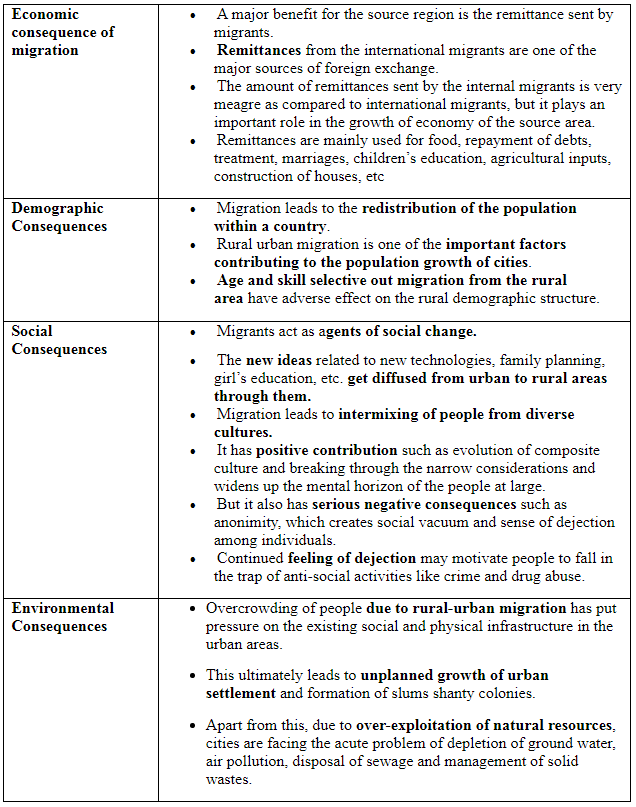Geography: CUET Mock Test - 8 - CUET MCQ
30 Questions MCQ Test CUET Mock Test Series - Geography: CUET Mock Test - 8
Other than flavourings, what is used to manufacture chewing gum?
India accounts for about _____ percent of the World's surface area.
Which among the following is not a biodegradable pollutant?
Match List I with List II

Choose the correct answer from the options given below:
Which theory may be applied to characterise and forecast the demographics of any location?
Which index measures the shortfall in human development?
Which of the following pack animals is preferred for mountainous areas?
Directions: Read the following passage carefully:
Mining requires large areas that need to be cleared prior to mining activities. Large scale deforestation results in the loss of oxygen producing plants and the destruction of vital habitats. Among other ill-effects of deforestation, the prime one is that it reduces overall biodiversity of an area. Mining utilises a variety of poisonous chemicals which can leak into nearby water supplies or evaporate into the air, bringing them into contact with humans, and wildlife.
Q. Profitability of mining does not depend on:
Which of the following time-periods marked the emergence of three new disciplines pertaining to geography?
Which of the following is inevitable in enlarging people's choice?
Which of the following statements is/are true in context of manganese and its production in India?
Which of the following is/are correct?
1. The French established cocoa and coffee plantations in West Africa.
2. The British set up large tea gardens in India and Sri Lanka.
3. Rubber plantations were created in Malaysia and sugarcane and banana plantations were created in South America.
Which of the following waterways belongs to the Europe?
The process of migration from plain areas to pastures on mountains during summers and again from mountain pastures to plain areas during winters is known as:
Which of the following groupings of cities has been done according to ascending order of their size of population?
As a matter of custom, each community possesses a well-defined region. Which of the following activities is characterised by the above-mentioned line?
Which of the following is not a method for distinguishing traditional industrial regions?
Which one is the oldest approach in human development?
The Human Development Index and the Human Poverty Index are two important indices used by the ___________ to measure human development.
India occupies 2.4% of the world's land area and contributes to 15% of the world's population. In 10 years between 1991 and 2001, our population grew by nearly 21%.
Q. Which of the following factors will affect the population growth rates of a place?
i. Emigration
ii. Immigration
iii. Number of births
Which of the following characteristics define(s) the early colonial period?
When did the transportation revolution occur in the eighteenth century?
|
39 docs|148 tests
|





















